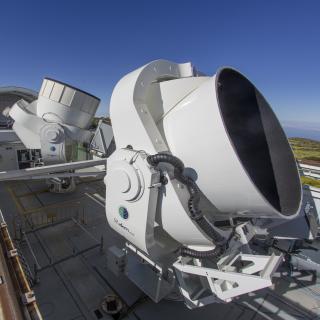Bibcode
De Miguel-Hernández, J.; Hoyland, R. J.
Referencia bibliográfica
Journal of Instrumentation, Volume 14, Issue 08, pp. R08001 (2019).
Fecha de publicación:
8
2019
Número de citas
8
Número de citas referidas
8
Descripción
The literature on horn antennas dedicated to radio astronomy and
satellite communications applications is very extensive and at times
disjointed, relevant contributions being distributed as far back as from
the 60's until the present today. This work combines a compact but
complete review of the different theories, methodologies and techniques
used to describe corrugations and metamaterials in their application to
feedhorns used in radio astronomy and satellite communications along
with some new work to help explain the theory in a more practical way.
Starting with the hybrid-mode condition firstly corrugated horns are
explained describing soft and hard boundaries and also the theory from a
plasmonic optics point of view. Following this the use of metamaterials
in order to design horn antennas with quasi-null cross-polarization and
low E-Plane sidelobes level over an ultra-wideband is described. The
objective of this work is to help to ease the learning curve of the post
graduate students and young professionals dedicated to these tasks, and
try to inspire the work of the senior professionals toward a new
direction and approach.
Proyectos relacionados

Anisotropía del Fondo Cósmico de Microondas
El objetivo general de este proyecto es determinar y estudiar las variaciones espaciales y espectrales en la temperatura del Fondo Cósmico de Microondas y en su Polarización en un amplio rango de escalas angulares que van desde pocos minutos de arco hasta varios grados. Las fluctuaciones primordiales en la densidad de materia, que dieron origen a
Rafael
Rebolo López

Experimento QUIJOTE CMB
QUIJOTE es un programa de dos telescopios y su batería de instrumentos, instalados en el Observatorio del Teide, dedicados fundamentalmente a la caracterización de la polarización del Fondo Cósmico de Microondas, en el rango de frecuencias de 10-42 GHz.
José Alberto
Rubiño Martín